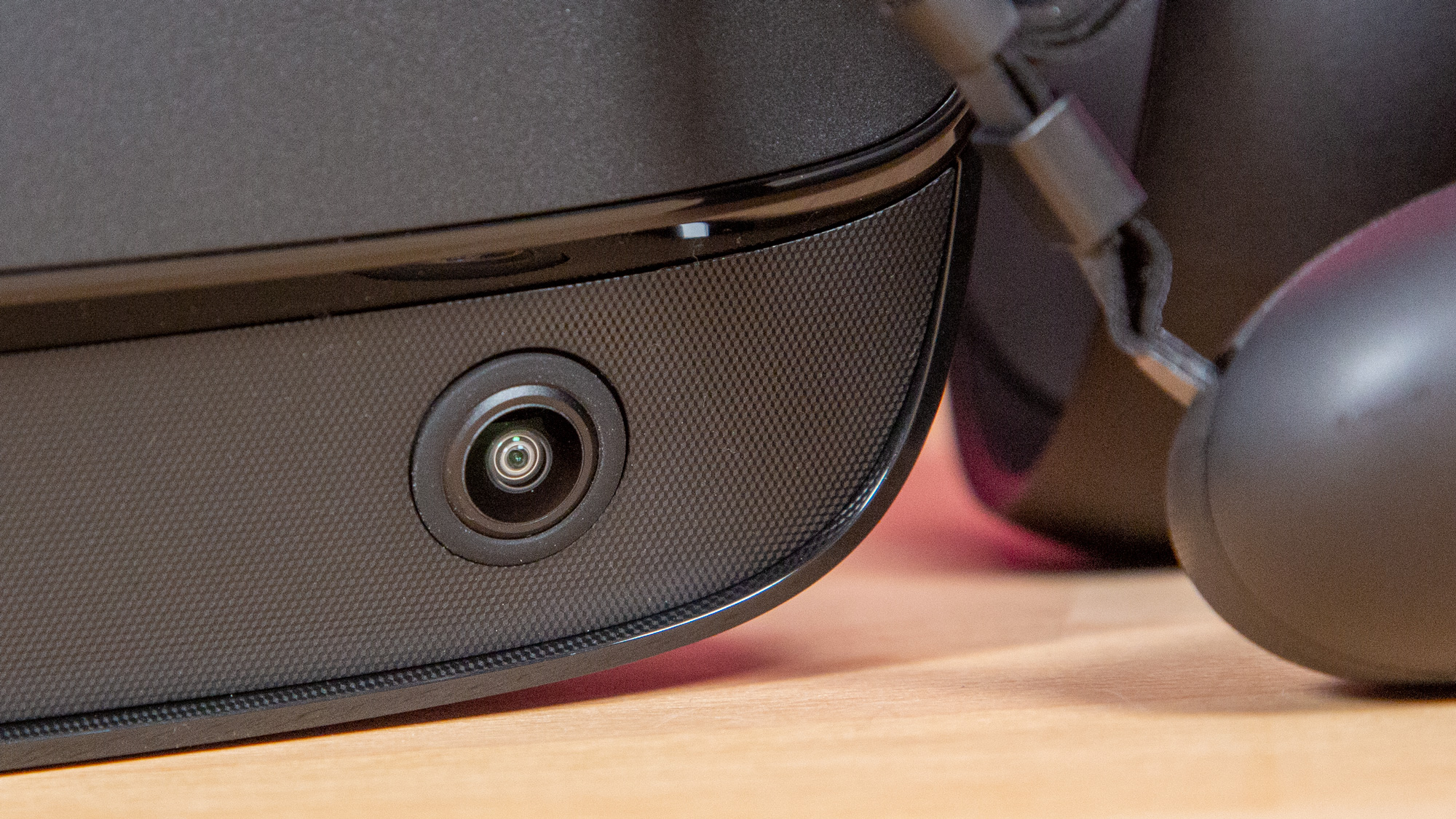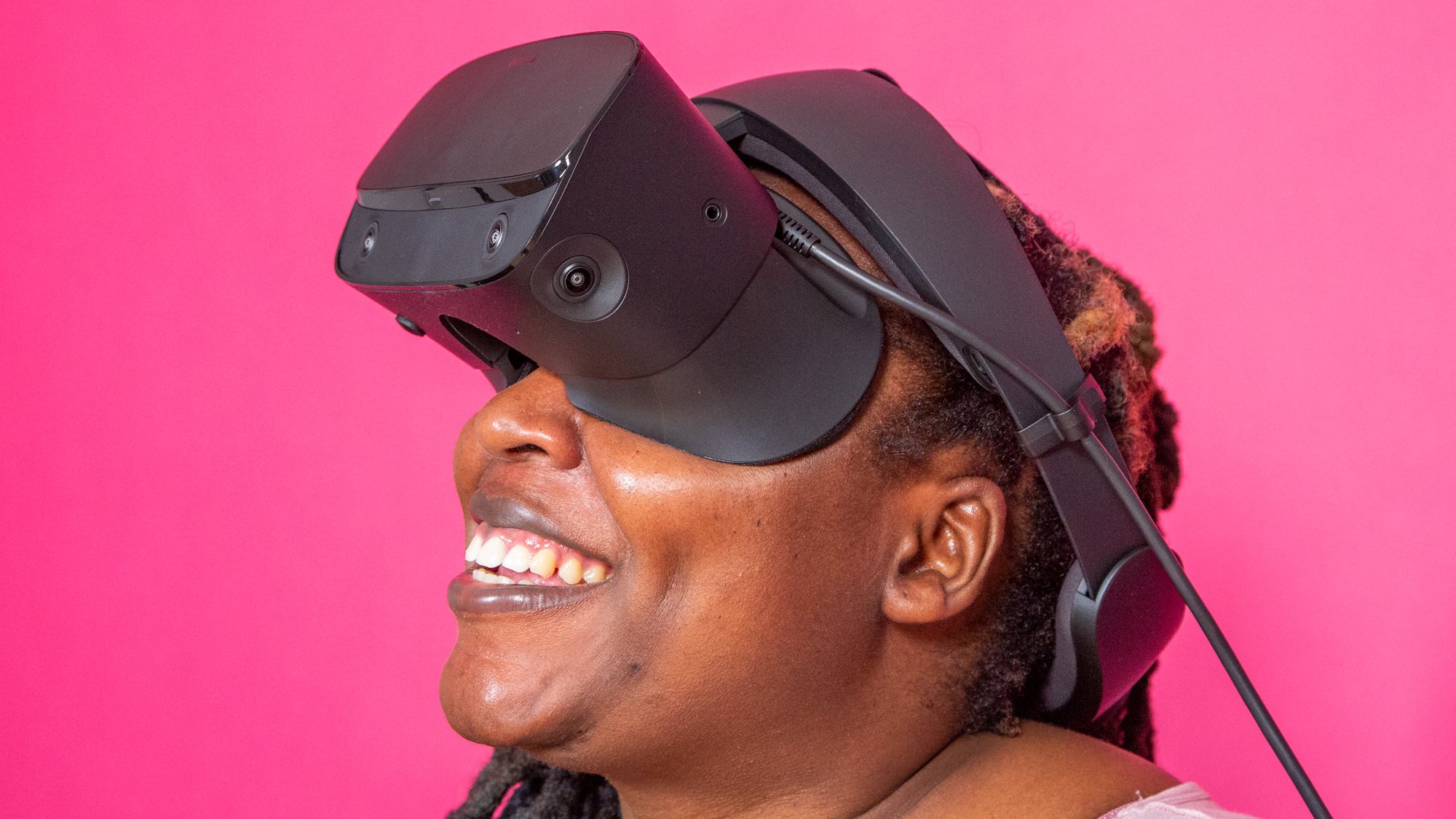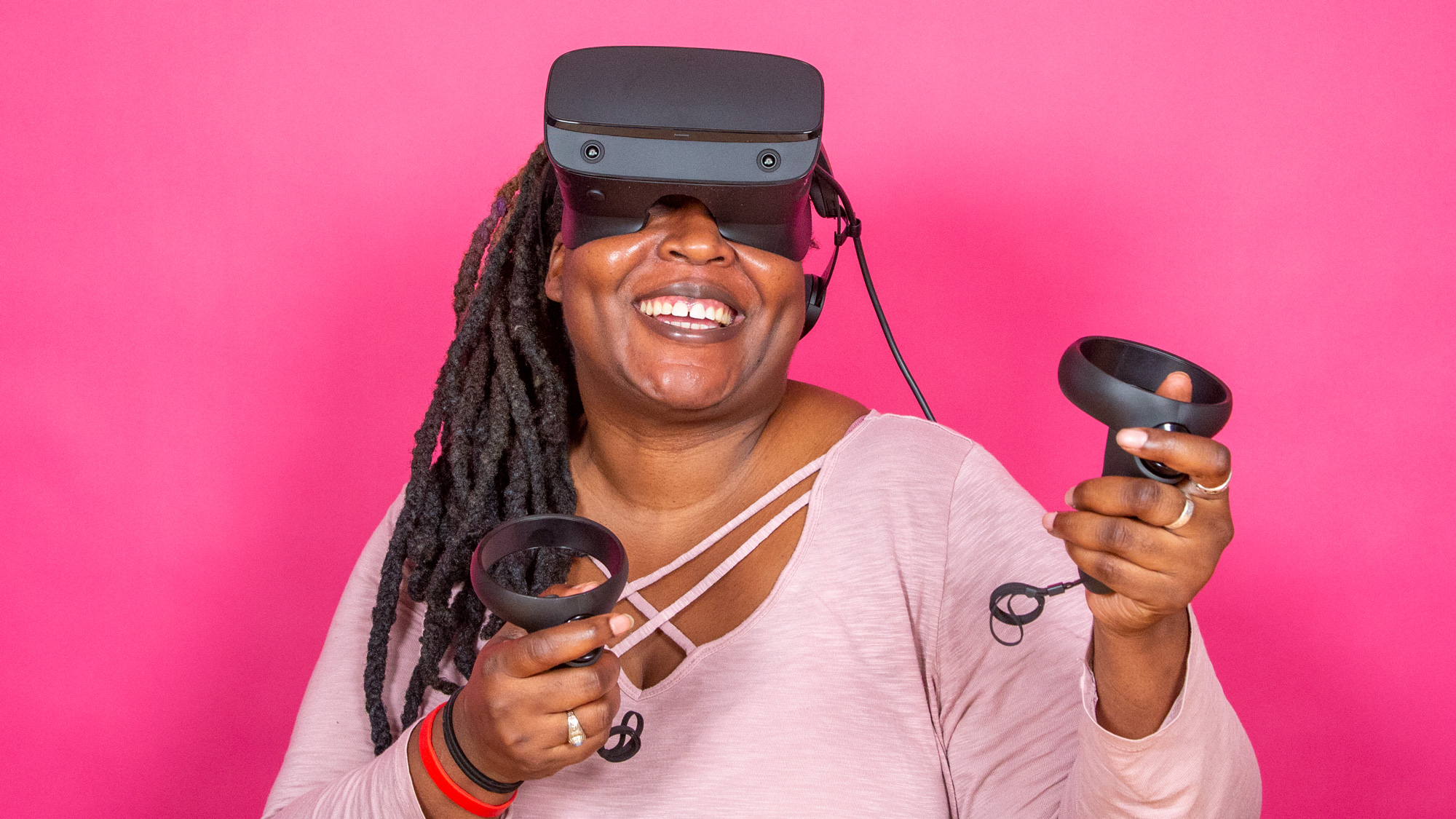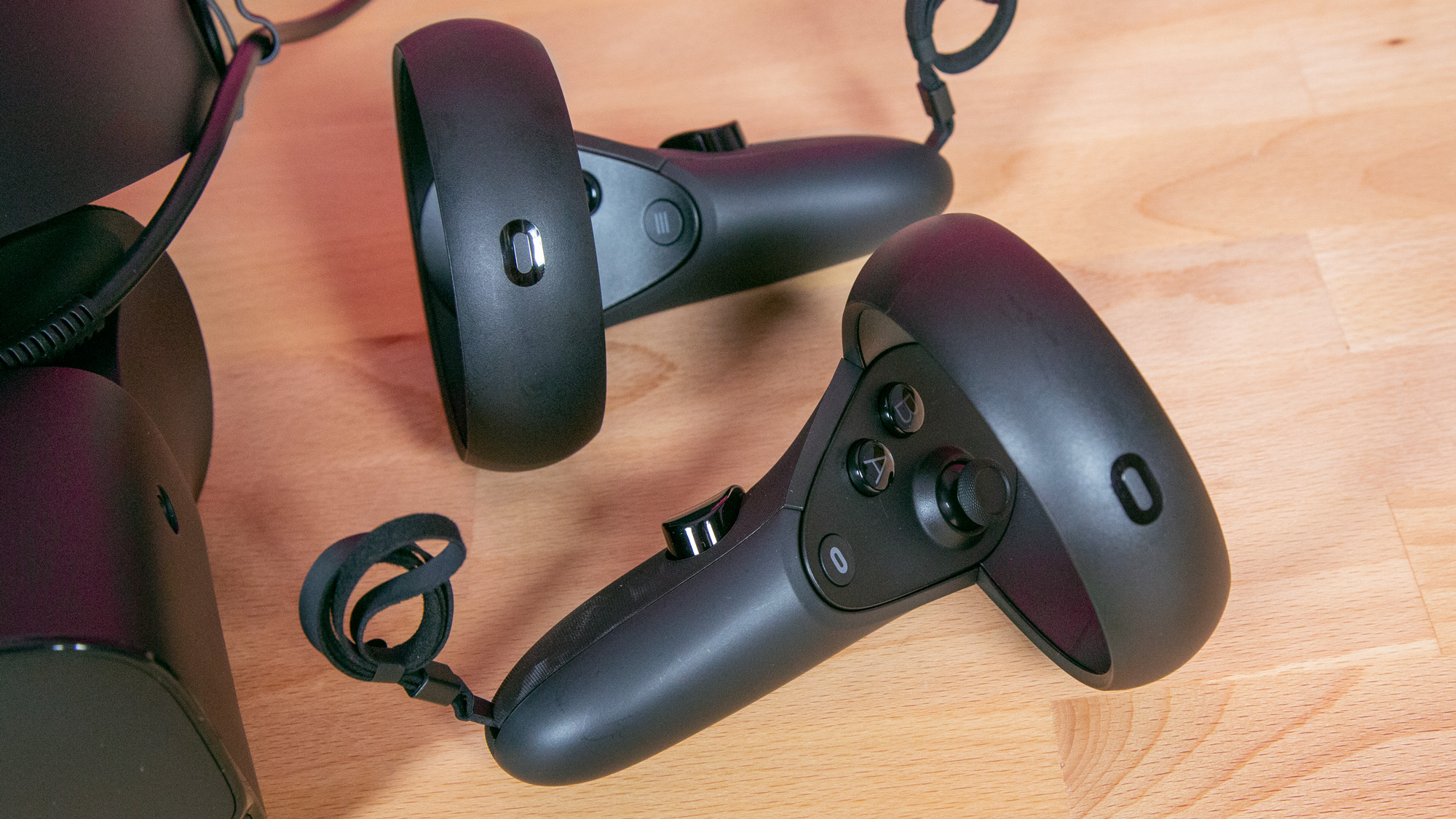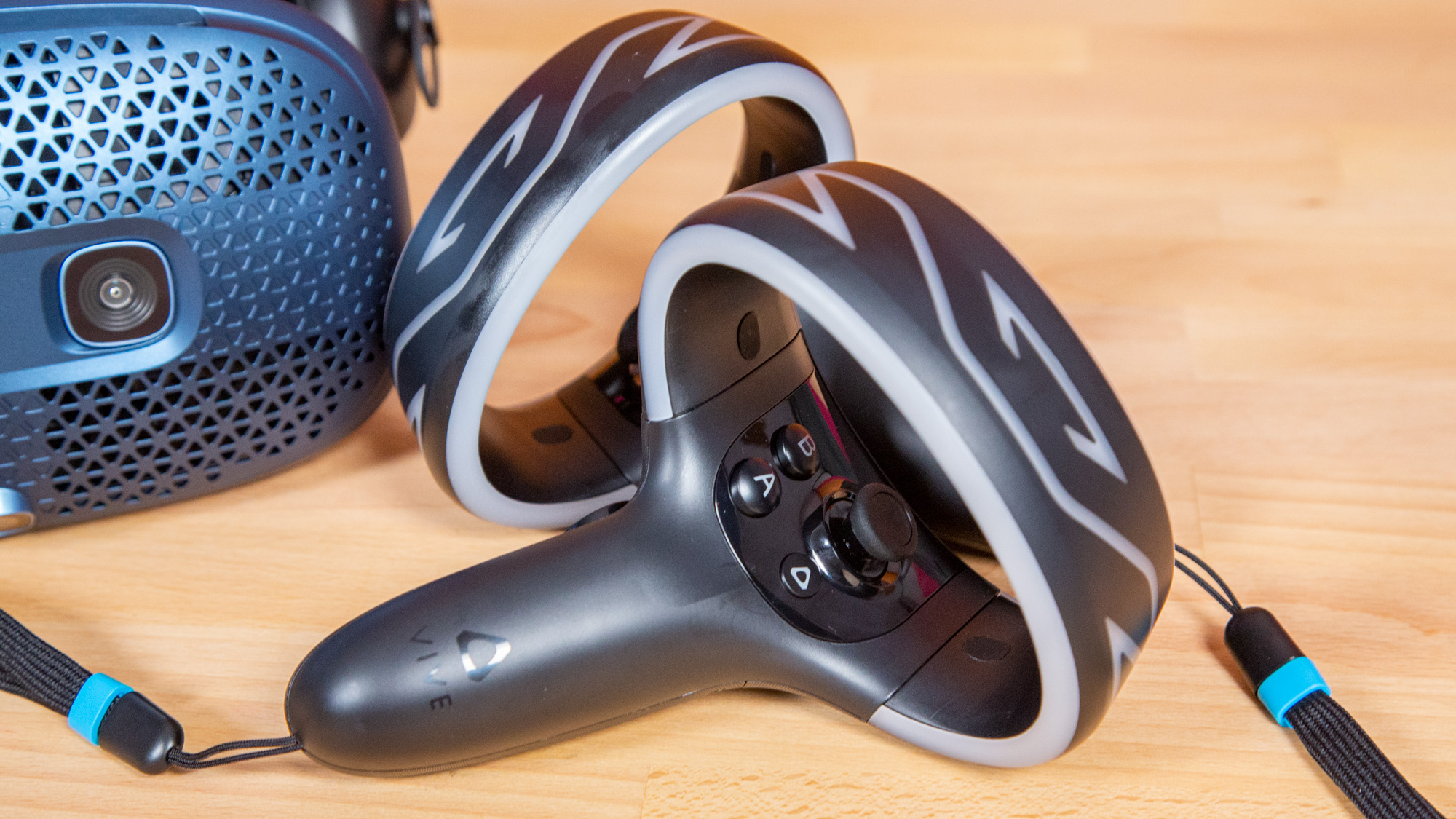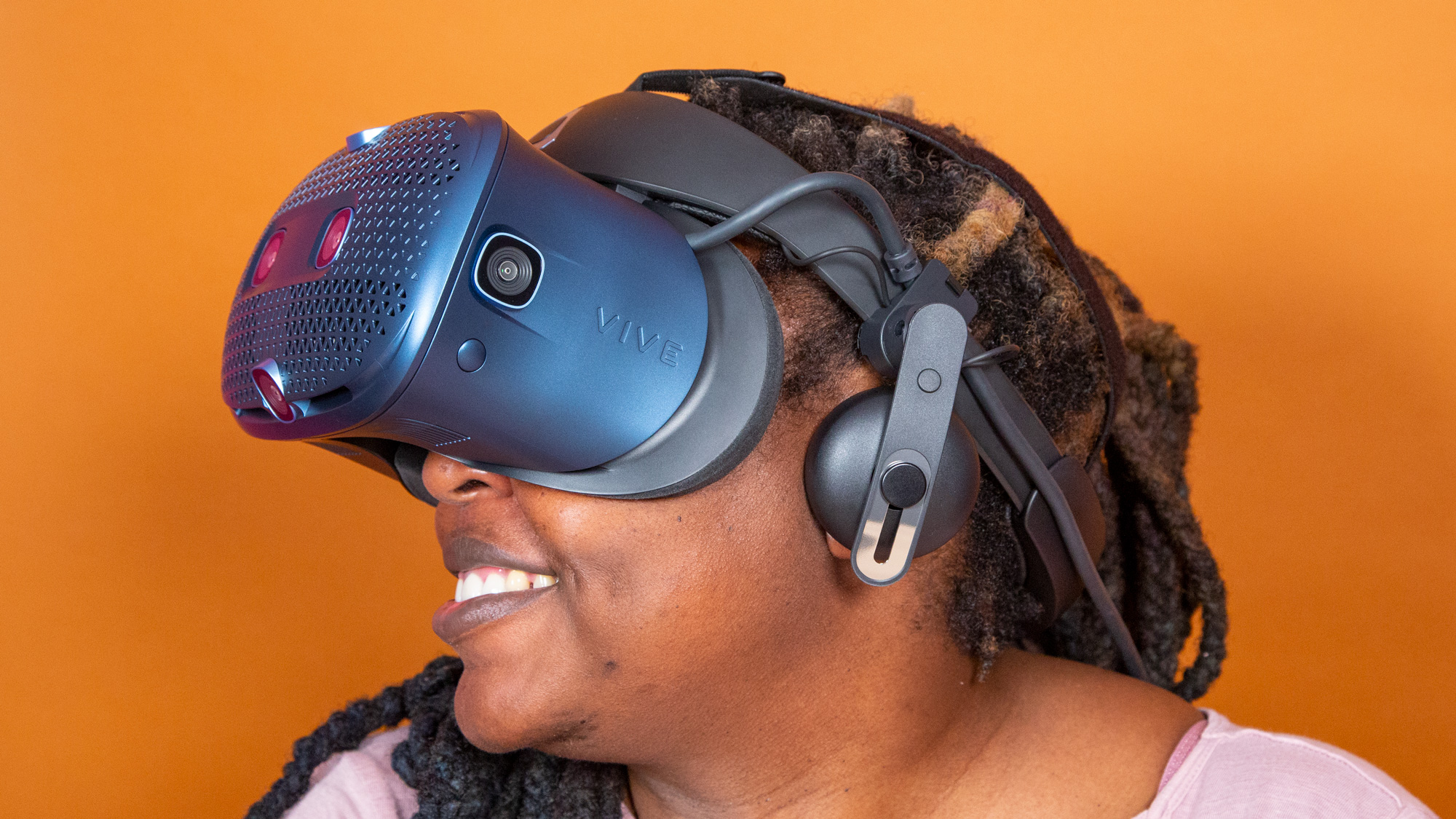Oculus Rift S vs. HTC Vive Cosmos: Which VR headset wins?
A battle in virtual reality
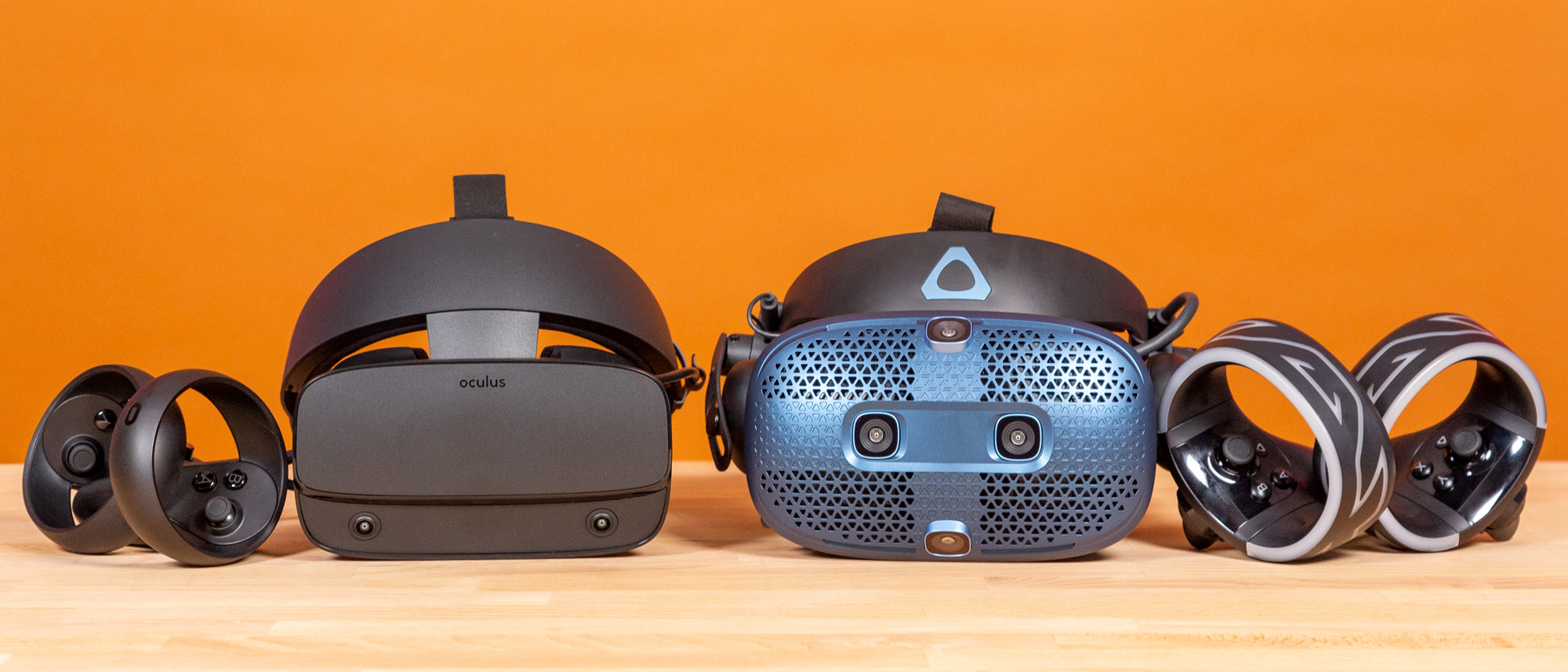
It's pretty slim pickings when shopping for VR headsets, so you have to be careful about which one you choose. The Oculus Rift S and the HTC Vive Cosmos have been dominating the VR headset scene for quite awhile now, but which one of them is the better VR headset?
At $399, you might think it’s unfair for the Rift S to go head-to-head with the Vive Cosmos, which runs for $699. But the differences between them are startling for the reasons you won’t expect, and the battle is actually a lot closer than you might think.
Here’s how these two VR headsets -- the Rift S and Vive Cosmos -- stack up.
Design
The Oculus Rift S and HTC Vive Cosmos sport a similar profile, but they each have distinctive features. The Rift S is more compact and goes for a discreet matte-black look, while the Vive Cosmos shows off a sleek, albeit bulky sci-fi design that gives off that true virtual reality aesthetic.
Looking at the faceplates side-by-side, the Rift S looks plain with two cameras below the curve of the plate, while the Vive Cosmos' hollow triangle designs matched with an elegant blue hue makes it look like a piece of alien technology.
Weighing 1.2 pounds and measuring 10.8 x 3.7 x 5.2 inches, the Rift S is lighter but slightly wider than the Vive Cosmos, which comes in at 1.5 pounds and stacks up to 7.5 x 4.6 x 5.6 inches. The Rift S manages to save some space with its audio solution, as it sports integrated speakers, whereas the Vive Cosmos has an external headphone setup attached to it.
Overall, the Oculus Rift S is compact where it counts, and size is everything when it comes to VR tech, which is why it has the more ideal design.
Sign up to receive The Snapshot, a free special dispatch from Laptop Mag, in your inbox.
Winner: Oculus Rift S
Lenses
When you’re looking at specs, the HTC Vive Cosmos has the advantage. It sports 2880 x 1700-resolution lenses comboed with a smooth 90-Hz refresh rate and a 110-degree field of view. Meanwhile, the Oculus Rift S' lenses sport only 2560 x 1440-resolution lenses at a 80-Hz refresh rate with a 110-degree field of view.
Both lenses were incredibly colorful and bright when playing games like Arizona Sunshine, as the orangish desert and mountainous ranges popped on the displays. When comparing the resolutions and refresh rate, the difference between the lenses was so negligible that I couldn’t see the difference.
However, noticeable or not, the HTC Vive Cosmos still has the slight advantage over the Oculus Rift S on paper.
Winner: HTC Vive Cosmos
Comfort
There’s a stark contrast between the Oculus Rift S and HTC Vive Cosmos when it comes to comfort.
With the Rift S, you have to worry about the fit wheel on the back of the headband, the depth-adjustment button below the goggles, and the top strap, which is arguably the most important thing to figure out. For the Vive Cosmos, there's the adjustment dial on the back of the headband for adjusting the tightness then, there's the top strap for creating a comfortable fit along the length of your skull, and the IPD knob for fixing the focus of the lenses. You can also flip up the visor to easily slide the band on.
The biggest difference between these two headsets are the cushions they use. The Rift S uses a padded cloth cushion that feels like a microfiber cloth, whereas the Vive Cosmos’ has a stiffer cushion that’s surrounded by a pleather material cut with diamond designs that left a distinct imprint on my head. It was easier to figure out the best way to position the headset using the Rift S compared with the Vive Cosmos.
I could wear the Rift S for hours, but I got tired of wearing the Vive Cosmos after about 30 minutes. Overall, the Rift S is way more comfortable to wear.
Winner: Oculus Rift S
Performance
Both headsets ditch their base stations and go for self-contained tracking from their cameras. For a more expensive headset, the HTC Vive Cosmos falls flat on its face when it comes to performance while the Oculus Rift S flourished.
I played Arizona Sunshine on both headsets, and wow, what an difference. With the Rift S, the tracking was so smooth that I felt like a complete badass, bouncing around like a cowboy and nailing headshots on zombies with my six-shooter. Even when the game became more intensive, sending hordes of zombies after me, I didn’t experience any slow down as I lit up everything in front of me with a submachine gun.
However, when playing with the Vive Cosmos, every time I went to reload, my arms would get trapped in the air for a split second before the system registered where my guns actually were. Ironically, aiming and firing my guns felt fine, but if I moved just a little too quickly, the headset would spazz out and my arms would be exactly where they shouldn’t be, which cost me way too many runs.
The Vive Cosmos struggled to find itself without tracking stations to hold its hand, while the Rift S became a successful and independent VR headset.
Winner: Oculus Rift S
Controllers
The Oculus Touch and Vive Cosmos controllers both have their strengths and weaknesses so it’s difficult to decide which one I prefer.
I'm impressed by the Oculus Touch controllers, as they give you independent control of your thumb and index finger thanks to the touch sensors on the face buttons and trigger. And it’s incredibly light in my hands, at 3.7 ounces. However, I have a few issues with it. The grip is too short, and with sweaty hands, it’s easy to slip out. Also, since the battery cover is magnetic, it constantly slid out of place. Moreover, the menu button is located under the face buttons, which caused me to accidentally click it at the most inopportune moments.
Meanwhile, the Vive Cosmos controllers fix the problems I had with the Oculus Touch controllers: They have a longer grip, a non-magnetic battery panel and the menu buttons are to the side of the face buttons, not under it. However, the Vive Cosmos controllers come with their own slew of problems. For one, they're much heavier, at 7.4 ounces. The grip itself is not very ergonomic, as my hands cramped up after using them for a while. On top of that, you don’t get any of the touch controls that you get with the Oculus Touch controllers.
Overall, both controllers are flawed in ways that make virtual reality a little less immersive.
Winner: Draw
Games
When it comes to games, the Oculus Rift S and HTC Vive Cosmos are in a very PlayStation vs. Xbox scenario, where the former has the critically-acclaimed games and the latter has an awesome service to experience a ton of games for free.
The Rift S gets a ton of well-known IPs through games like Vader Immortal, Marvel Powers United VR and Medal of Honor: Above and Beyond. Even popular developers are making games for the platform. For example, Insomniac Games recently released Stormland, a sci-fi action-adventure game.
On the flip side, you don’t get any access to exclusive VR games with the Vive Cosmos. However, Vive offers a paid monthly service called Viveport Infinity that'll give you access to hundreds of VR games as well as exclusive offers and discounts, all for $12.99 per month or $8.99 per month if you buy an annual plan. This is a great option if you’re just getting into VR and aren't sure what games to play yet.
Overall, no matter which headset you choose, you’ll have a ton of games to choose from and different services to appeal to your needs.
Winner: Draw
Value and configurations
When it comes to value, let's put the Oculus Rift S and HTC Vive Cosmos in the perspective of current-gen gaming consoles. Right now, the Rift S and Vive Cosmos cost $399 and $699, respectively. MSRP of current-gen consoles, the Xbox One X ($399), PlayStation 4 Pro ($399) and Nintendo Switch ($299) match or are closer in price to the Rift S.

The Vive Cosmos costs $300 more than the average console and the Rift S, and since it doesn't offer anything the Rift S doesn't have, it's a hard sell. A mere resolution and refresh rate upgrade won’t justify the price when the tracking is awful. HTC is trying to compete with the Oculus Rift S in price with the HTC Vive Cosmos Play, which is going to be cheaper but offer fewer cameras for tracking.
The only way I can see the Cosmos standing a chance against the Rift S is if it goes up against the HTC Vive Cosmos Elite, which is designed to have more tracking cameras and comes with two base stations to improve tracking. But the price difference will be $399 vs. $899, which is just ridiculous.
Winner: Oculus Rift S
Overall winner: Oculus Rift S
From price to performance, the Oculus Rift S is the better overall VR headset. It offers you so much more for the money you’re spending, from comfort to its compact design, and you also get to play a ton of cool exclusive games like Vader Immortal.
| Header Cell - Column 0 | Oculus Rift S | HTC Vive Cosmos |
|---|---|---|
| Design (10) | 8 | 7 |
| Lenses (10) | 7 | 8 |
| Comfort (20) | 15 | 10 |
| Performance (20) | 17 | 10 |
| Controllers (15) | 10 | 10 |
| Games (15) | 13 | 13 |
| Value (10) | 8 | 5 |
| Overall (100) | 80 | 65 |
The HTC Vive Cosmos offers lenses at a higher resolution, and a great gaming service as well as a decent pair of controllers that succeed where the Rift S falters. However, if you’re considering the Vive Cosmos, you should plan on investing in some base stations.
Overall, the Oculus Rift S is the best affordable VR headset you can buy.

Rami Tabari is the Reviews Editor for Laptop Mag. He reviews every shape and form of a laptop as well as all sorts of cool tech. You can find him sitting at his desk surrounded by a hoarder's dream of laptops, and when he navigates his way out to civilization, you can catch him watching really bad anime or playing some kind of painfully difficult game. He’s the best at every game and he just doesn’t lose. That’s why you’ll occasionally catch his byline attached to the latest Souls-like challenge.
